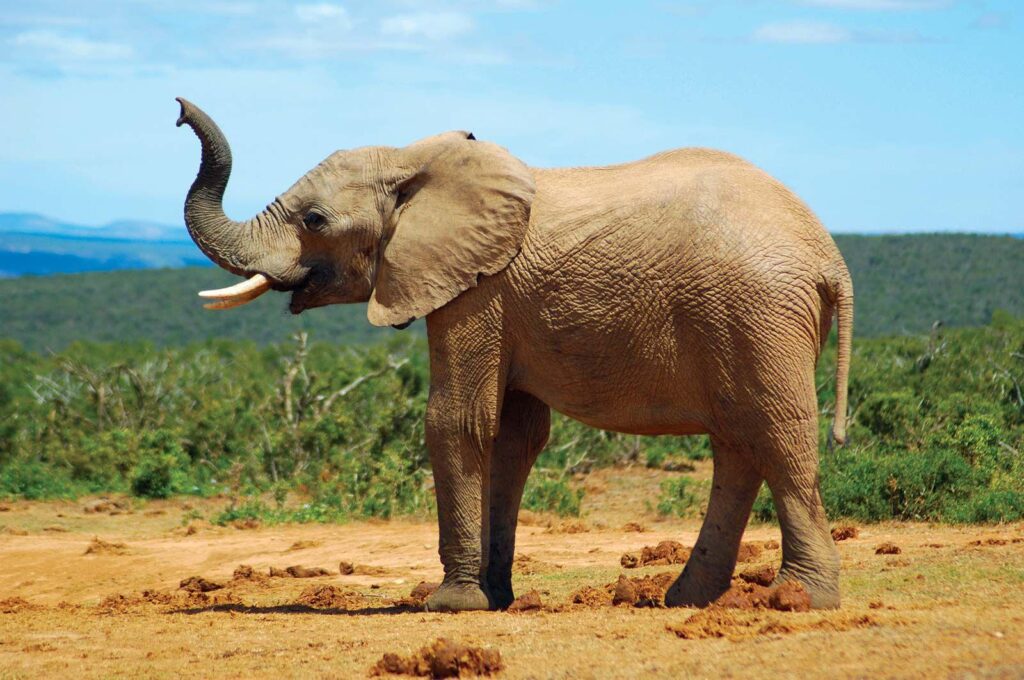Why Do Elephants Have Big Ears? Uncovering Nature’s Adaptive Marvels
Elephants, the majestic giants of the animal kingdom, are easily recognizable not only for their impressive size but also for their extraordinary ears. These massive appendages, which can span up to six feet in length, are far more than just an aesthetic feature; they serve crucial biological and environmental functions that are essential for the survival of one of Earth’s most intelligent creatures. As temperatures in their native habitats soar, scientists are delving into the anatomy and physiology of elephant ears to understand their role in thermoregulation, communication, and social interaction. In this exploration, we aim to shed light on the evolutionary significance of these remarkable organs and what they reveal about the natural world of elephants. Join us as we unravel the fascinating reasons behind one of nature’s most iconic adaptations.
The Evolutionary Benefits of Elephant Ears in Temperature Regulation
Elephants have evolved to possess large ears, a characteristic that plays a crucial role in their ability to survive in hot climates. These expansive surfaces serve as a biological air conditioning system, allowing elephants to regulate their body temperature more efficiently. The ears contain a dense network of blood vessels, which aid in dissipating heat through a process known as thermoregulation. As blood circulates through these vessels, heat is released into the surrounding air, cooling the animal’s blood before it returns to the core of the body. This physiological adaptation is particularly advantageous in Africa, where temperatures can soar during the day.
Additionally, the size and shape of elephant ears are not merely aesthetic; they also enhance the animal’s ability to communicate and navigate its environment. The ears function as amplifiers for sound, assisting elephants in detecting calls from miles away, particularly in dense environments. Moreover, their ability to flap their ears serves as an additional cooling mechanism. With each flap, air circulates, providing further temperature relief. These adaptations underscore the importance of ear size in the evolutionary narrative of elephants, positioning them as formidable giants equipped to thrive in challenging habitats.
Understanding Communication and Social Dynamics Among Elephants
Elephants possess an extraordinary communication system that emphasizes their social dynamics and intricate relationships within herds. Their large ears play a crucial role beyond merely regulating body temperature; they act as sophisticated sound receivers. Elephants can detect low-frequency sounds, also known as infrasound, over long distances, enabling them to communicate with members of their group and coordinate activities such as migration or alerting to predators. These vocalizations, often imperceptible to human ears, can convey essential messages such as the presence of food, water, or threats, forming the foundation of their social structure.
The social bonds among elephants are further strengthened by non-verbal communication, including body language, gestures, and touch. Elephants often demonstrate emotional intelligence and empathy, responding to the distress of others with supportive behaviors. Their interactions include:
- Touching trunks: This intimate gesture serves as both reassurance and a way to reinforce social ties.
- Spatial awareness: Elephants exhibit remarkable awareness of personal space, adjusting their positions to maintain harmony in the herd.
- Vocalizations: Different calls signal various intentions, from mating to caring for young ones.
| Communication Method | Purpose |
|---|---|
| Infrasound | Long-distance communication |
| Physical touch | Emotional support and bonding |
| Body language | Social hierarchy and intentions |
Conservation Strategies to Protect Elephant Habitats and Their Unique Adaptations
To ensure the survival of elephants and the preservation of their habitats, several effective conservation strategies are being implemented worldwide. These initiatives are vital for protecting not only the majestic creatures themselves but also the diverse ecosystems they inhabit. Key strategies include:
- Habitat Restoration: Efforts are underway to restore degraded habitats, providing elephants with the resources they need to thrive.
- Protected Areas: Establishing national parks and wildlife sanctuaries to create safe environments where elephants can roam freely.
- Community Engagement: Involving local communities in conservation efforts fosters a sense of ownership and responsibility toward wildlife protection.
Furthermore, elephants exhibit unique adaptations that are closely linked to their habitat. Their large ears, crucial for thermoregulation, help dissipate heat while also enhancing their hearing capabilities. Understanding these adaptations enables conservationists to devise habitat management practices that support elephants in their natural environments. The relationship between elephant adaptations and habitat conditions is complex, yet it reveals the interconnectedness of species and their ecosystems. As we take steps to preserve these habitats, we simultaneously safeguard the intricate web of life that elephants—and many other species—depend on.
| Adaptation | Function |
|---|---|
| Large Ears | Temperature regulation and enhanced hearing |
| Trunk | Multi-functional tool for foraging and communication |
| Thick Skin | Protection against environmental elements |
Insights and Conclusions
the impressive size of an elephant’s ears serves multiple vital functions that extend beyond mere aesthetics. These remarkable appendages are critical not only for thermoregulation, allowing elephants to cool themselves in hot climates, but also play a significant role in communication and social interaction within herds. As researchers continue to study these majestic creatures, understanding the intricacies of their anatomy helps to shed light on the complex adaptability they exhibit in their natural habitats. As we move forward, it remains essential to protect and conserve these incredible beings, whose survival hinges on both their physical traits and the ecosystems that support them. For more insights into the fascinating world of wildlife, stay tuned to Live Science.
